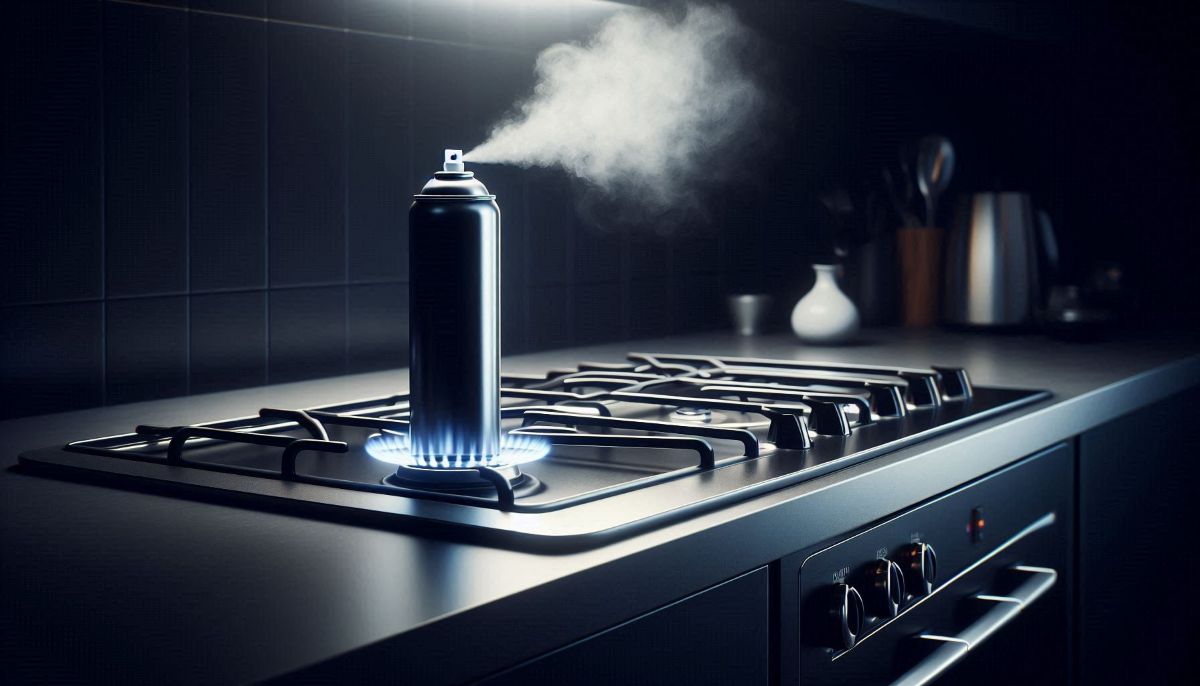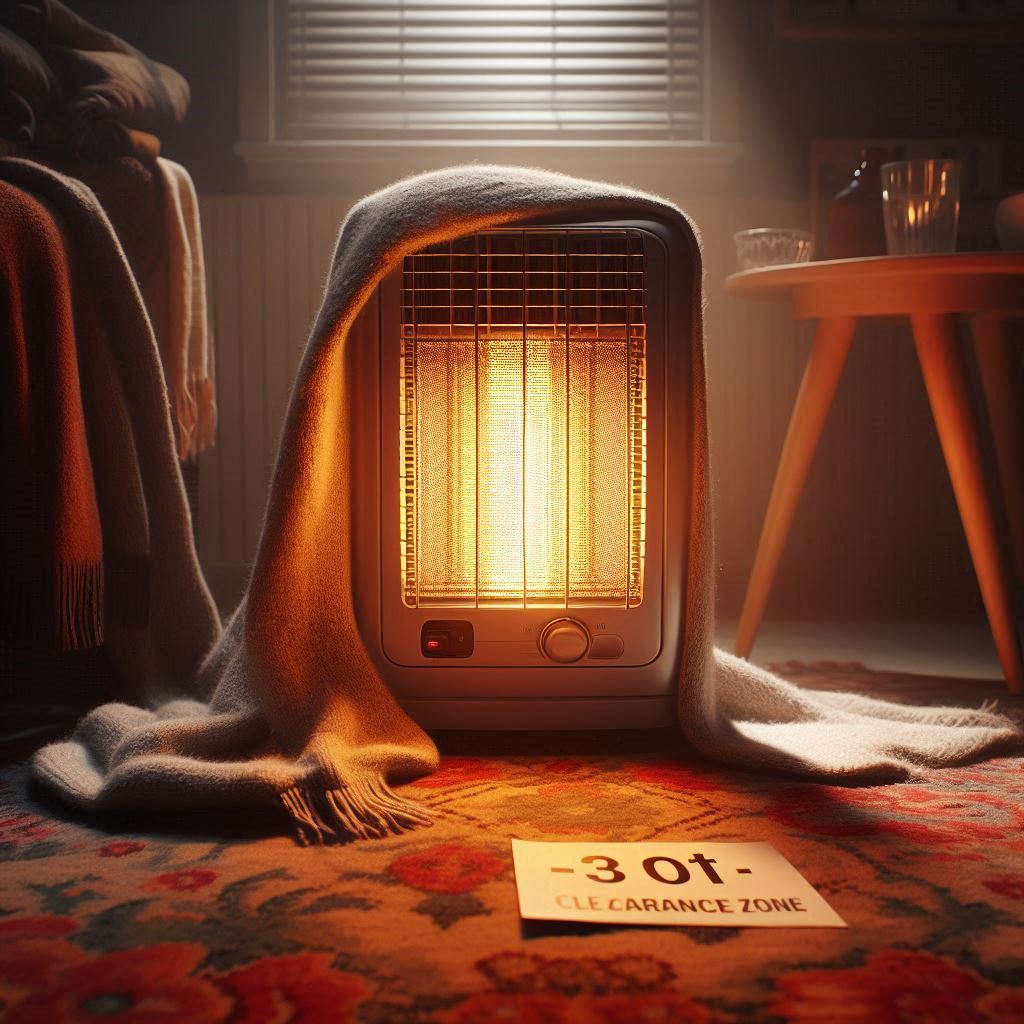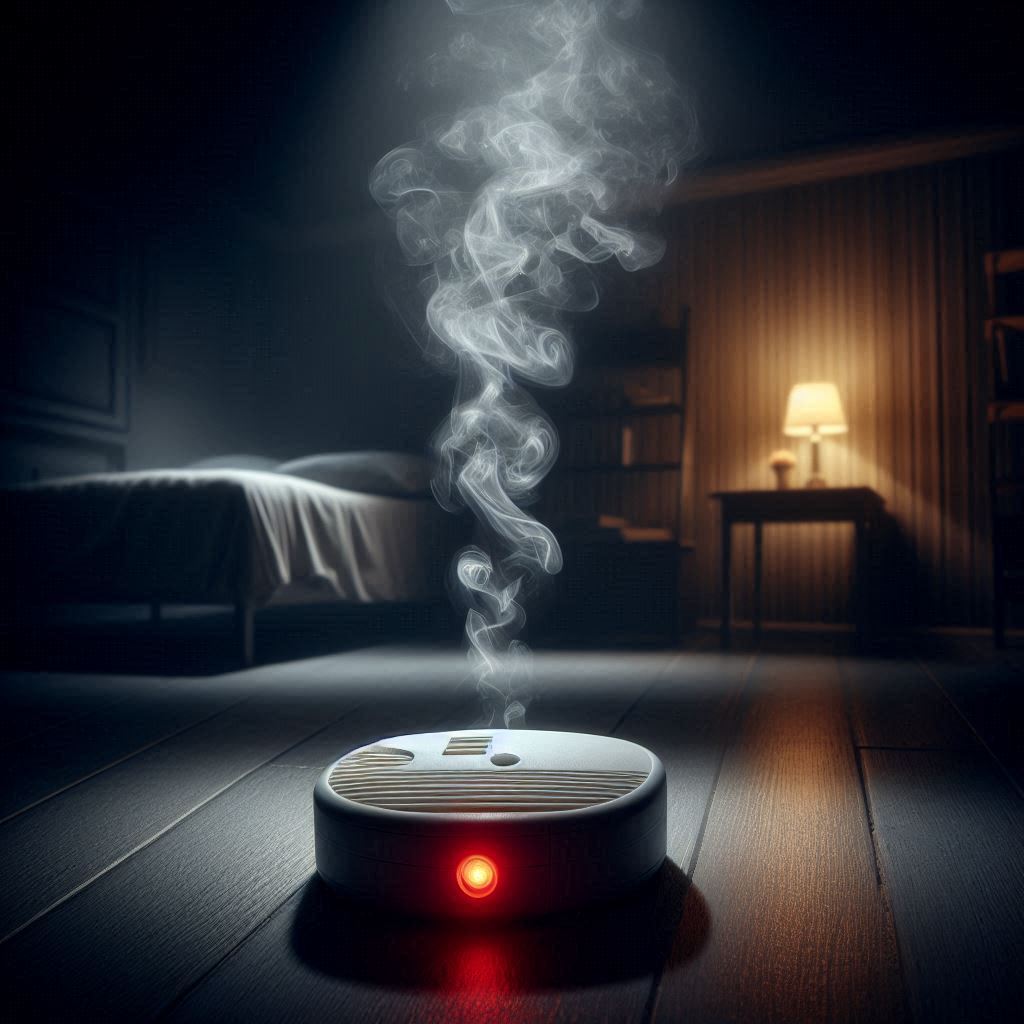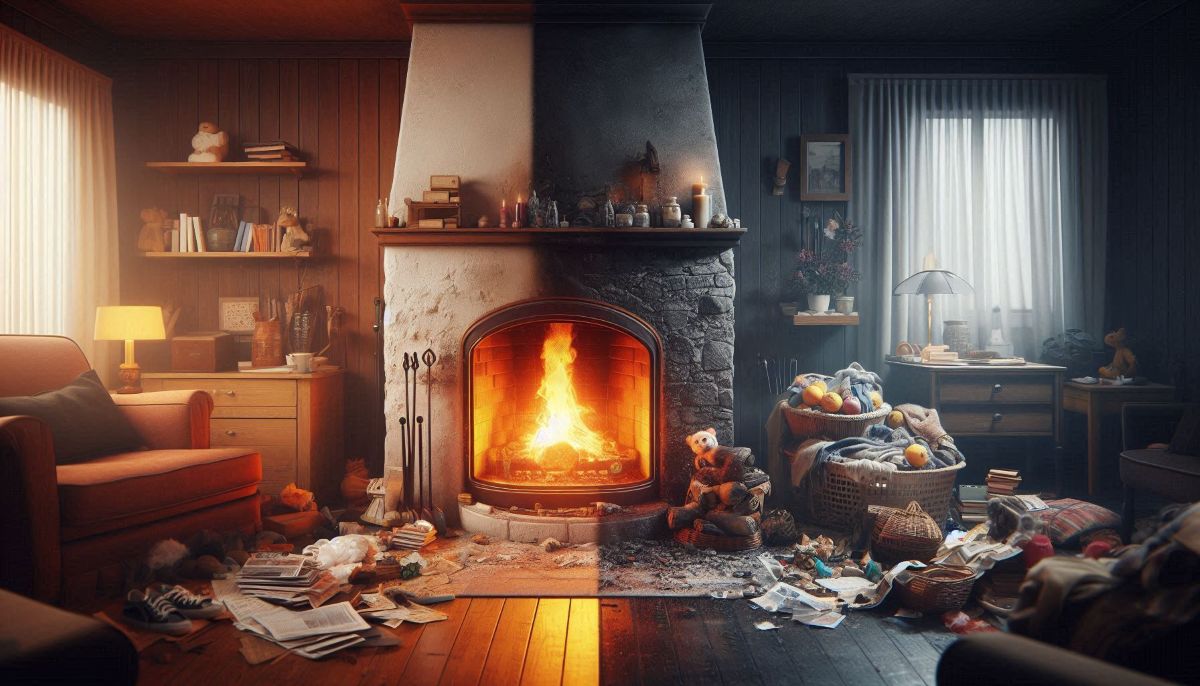
Watch short for this article (5 slides)
Beyond the Obvious: Unmasking Hidden Fire and Explosion Hazards in Your Home
Our homes are our sanctuaries, filled with familiar objects that bring comfort and convenience. Yet, lurking beneath the surface of everyday life are potential hazards capable of turning routine moments into emergencies. Common items, from heating appliances warming a chilly room to seemingly innocuous aerosol cans, can pose significant fire and explosion risks if mishandled or used improperly. Understanding these hidden dangers, the science behind why they occur, and the specific preventative measures required is crucial for maintaining a truly safe home environment. This article delves into often-overlooked household hazards, providing detailed explanations and actionable steps to protect yourself and your family.

The Pressurized Peril: Understanding Aerosol Can Dangers
Aerosol cans – dispensing everything from hairspray and air fresheners to insecticides and cooking oil – are ubiquitous in modern homes. Their convenience, however, belies a significant hazard rooted in their basic design: pressurized contents combined with flammable components.
- Flammable Propellants: Most aerosols use flammable hydrocarbon propellants, such as propane, butane, or isobutane, to expel the product. These gases are highly combustible.
- Fine Mist Ignition: When sprayed, the product forms a fine mist (aerosol) which mixes readily with air. This increases the surface area of the flammable propellant, making it incredibly easy to ignite by even a small spark or nearby flame (like a pilot light, candle, stove burner, or static discharge). The recent incident involving insecticide sprayed near a heating source in Japan tragically illustrates this exact risk.
- Over-Pressurization Risk (BLEVE): Aerosol cans are pressurized containers. If exposed to excessive heat (e.g., direct sunlight, near a stove, heater, fireplace, or left in a hot car), the liquid propellant inside can boil, rapidly increasing the internal pressure. If the pressure exceeds the can's structural integrity, it can rupture violently, potentially causing a Boiling Liquid Expanding Vapor Explosion (BLEVE). This explosion can propel metal fragments and release the flammable contents, leading to secondary fires.
Critical Safety Measures for Aerosol Cans:
- Ventilation is Key: Always use aerosol products in well-ventilated areas to prevent the buildup of flammable vapors. Open windows or use exhaust fans.
- Maintain Distance from Ignition Sources: NEVER spray aerosols near open flames (candles, pilot lights, gas stoves, fireplaces), active heating elements (space heaters, hair dryers), electrical sparks (switches, static electricity), or while smoking. Maintain a significant distance – several feet at minimum.
- Proper Storage is Non-Negotiable:
- Store aerosol cans in cool, dry locations, away from direct sunlight and heat sources.
- Ideal storage temperature is typically below **120°F (49°C)** – check the can label for specific recommendations. Never store them in vehicles on hot days or near furnaces, water heaters, or radiators.
- Do Not Puncture or Incinerate: Puncturing cans, even seemingly empty ones, can cause sudden release of residual pressure and propellant. Never dispose of aerosol cans in fires or incinerators, as this will cause them to explode. Follow local regulations for proper disposal (often requires treating them as hazardous waste when not completely empty).
- Check Labels: Read and follow all safety warnings and instructions provided by the manufacturer on the can itself.
When Warmth Turns Hazardous: Understanding Heating Appliance Risks

Heating systems keep us comfortable, but they are a leading cause of home fires, especially during colder months. Different heating sources carry specific risks:
1. Space Heaters (Electric & Fuel-Burning)
- Clearance is Critical: The most common cause of space heater fires is placing them too close to combustible materials. Maintain a minimum **3-foot (approximately 1-meter) "clear zone"** around the front, sides, and top of the heater, free from curtains, furniture, bedding, clothing, papers, rugs, and anything flammable.
- Electric Heater Safety:
- Plug electric heaters directly into a wall outlet; avoid using extension cords or power strips, which can overheat and cause fires.
- Choose models with safety features like automatic shut-off (if tipped over or overheating).
- Never leave electric heaters unattended, especially when sleeping.
- Inspect cords regularly for damage (fraying, cracking).
- Fuel-Burning Heater Safety (Kerosene, Propane):
- **Ventilation is MANDATORY:** These heaters consume oxygen and produce combustion byproducts, including deadly, odorless Carbon Monoxide (CO). ONLY use heaters specifically rated for indoor use, and ONLY in well-ventilated areas according to manufacturer instructions. Never use outdoor heaters indoors.
- **Refueling Hazard:** Refuel ONLY when the unit is cool and outdoors to prevent ignition of flammable vapors. Use only the approved fuel type.
- Follow the 3-foot clearance rule strictly.
2. Fireplaces and Wood Stoves
- Chimney Maintenance: Have chimneys and flues inspected and cleaned professionally **at least annually** to remove creosote buildup – a highly flammable substance responsible for many chimney fires.
- Spark Control: Use a sturdy fireplace screen or glass doors to prevent sparks and embers from escaping and igniting nearby carpets, furniture, or décor.
- Proper Fuel: Burn only seasoned hardwood. Never burn trash, cardboard, treated wood, or accelerants like gasoline, which can cause dangerous flare-ups or release toxic fumes.
- Ash Disposal: Place cooled ashes in a **metal container with a tight-fitting lid**. Store the container outdoors on a non-combustible surface, away from buildings, decks, and firewood, for several days before final disposal, as embers can remain hot for extended periods.
3. Central Heating Systems (Furnaces, Boilers)
- Professional Maintenance: Have your furnace or boiler inspected and serviced by a qualified technician **annually** before the heating season begins. This checks for safe operation, potential gas leaks, carbon monoxide leaks (cracked heat exchanger), and efficient performance.
- Filter Changes: Regularly change or clean furnace filters according to manufacturer recommendations (often monthly or quarterly) to ensure proper airflow and prevent overheating.
- Keep Vents Clear: Ensure heating vents (registers) are not blocked by furniture, rugs, or drapes to allow proper air circulation and prevent system strain. Keep the area around the furnace clear of stored items, especially flammables.
4. Kotatsu Tables (Specific Example)
Common in Japan, Kotatsu tables combine a low table frame with a heating element underneath and a heavy blanket draped over the top. While cozy, users must ensure bedding, cushions, clothing, or papers do not come into direct contact with the heating element, and check electrical cords for wear.
The Invisible Danger: Carbon Monoxide (CO) Poisoning

Incomplete combustion of any fuel (natural gas, propane, oil, kerosene, wood, charcoal) produces Carbon Monoxide (CO), an odorless, colorless, tasteless gas that is highly toxic.
- Sources: Faulty furnaces, boilers, water heaters, fuel-burning space heaters, blocked chimneys, running cars in garages, portable generators used indoors or too close to openings.
- Mechanism: CO binds to hemoglobin in the blood much more effectively than oxygen, preventing oxygen transport to vital organs.
- Symptoms: Often flu-like initially (headache, dizziness, nausea, fatigue), progressing to confusion, loss of consciousness, and death.
- Prevention:
- **Install CO Alarms:** Place CO alarms on every level of your home, especially outside sleeping areas, following manufacturer placement guidelines (typically wall-mounted, not ceiling-mounted like smoke alarms).
- **Test Regularly:** Test CO alarms monthly and replace batteries as needed (or per manufacturer instructions). Replace the entire unit according to its lifespan (often 5-10 years).
- **Ensure Proper Ventilation:** For all fuel-burning appliances.
- **Schedule Annual Inspections:** For heating systems, chimneys, and vents.
- **NEVER Use Generators Indoors:** Or near windows/doors/vents.
Gas Leaks: Silent Fuel for Explosions
Natural gas and propane leaks create highly explosive environments within homes.
- Sources: Faulty appliance connections (stoves, dryers, water heaters), aging pipes, damaged lines during construction/digging, improperly stored propane tanks.
- Detection:
- **Smell:** Natural gas and propane are naturally odorless but have a distinct "rotten egg" smell added (mercaptan) for detection.
- **Sound:** A hissing sound near a gas line or appliance.
- **Visual:** Bubbling in wet ground near a buried line, dead vegetation over a buried line.
- **Gas Leak Detectors:** Electronic detectors can provide an additional layer of safety.
- ACTION PLAN (If Leak Suspected):
- **DO NOT** operate light switches, use phones (landline or mobile), unplug appliances, or create any spark – even static electricity can ignite gas.
- **DO NOT** try to find the leak yourself or turn appliances off.
- **EVACUATE IMMEDIATELY:** Get everyone out of the house quickly and calmly. Leave doors open behind you to help ventilate.
- **CALL FROM OUTSIDE:** Once safely away from the house (at a neighbor's or down the street), call your gas utility's emergency number and/or 911.
- Prevention: Have gas appliances installed and serviced only by qualified professionals. Know the location of your main gas shut-off valve.
Other Potential Hazards to Watch For

- Lithium-Ion Batteries: Found in phones, laptops, e-bikes, tools. Can overheat and catch fire or explode if damaged, improperly charged (using wrong charger), or defective. Charge on hard, non-flammable surfaces away from combustibles. Follow manufacturer instructions. (CPSC - Lithium-Ion Battery Safety)
- Flammable Liquids & Vapors: Gasoline, paint thinners, rubbing alcohol, some cleaning solvents, alcohol-based hand sanitizers. Store in approved containers, away from heat/ignition sources. Use only in well-ventilated areas. Be aware that vapors are often heavier than air and can travel along floors to ignition sources. Static electricity can ignite vapors, especially in dry conditions.
- Electrical Hazards: Overloaded outlets/circuits, frayed cords, damaged wiring. Use Ground Fault Circuit Interrupters (GFCIs) near water sources and consider Arc Fault Circuit Interrupters (AFCIs) for broader fire prevention.
Your Safety Toolkit: Essential Detection and Suppression Devices

- Smoke Alarms: Install on every level, inside and outside sleeping areas. Interconnected alarms are best. Test monthly, replace batteries annually (unless long-life), replace units every 10 years. (NFPA - Smoke Alarms)
- Carbon Monoxide Alarms: As detailed above – critical for homes with fuel-burning appliances or attached garages.
- Fire Extinguishers: Keep accessible multipurpose (ABC rated) extinguishers, especially in the kitchen and garage. Know how to use one (PASS: Pull, Aim, Squeeze, Sweep). Check pressure gauge regularly.
Conclusion: Vigilance is the Best Prevention
While our homes provide shelter and comfort, they also contain inherent risks that demand respect and awareness. Common household items, particularly heating sources and pressurized containers like aerosol cans, require careful handling and adherence to specific safety protocols to prevent potentially devastating fires or explosions. Understanding the 'why' behind these dangers—how flammable propellants ignite, how heat builds pressure, how incomplete combustion creates CO, how gas accumulates—empowers us to act preventively. By implementing simple but crucial habits, maintaining appliances, installing and testing detectors, and knowing what to do in an emergency, we can significantly mitigate these risks and ensure our homes remain truly safe havens.